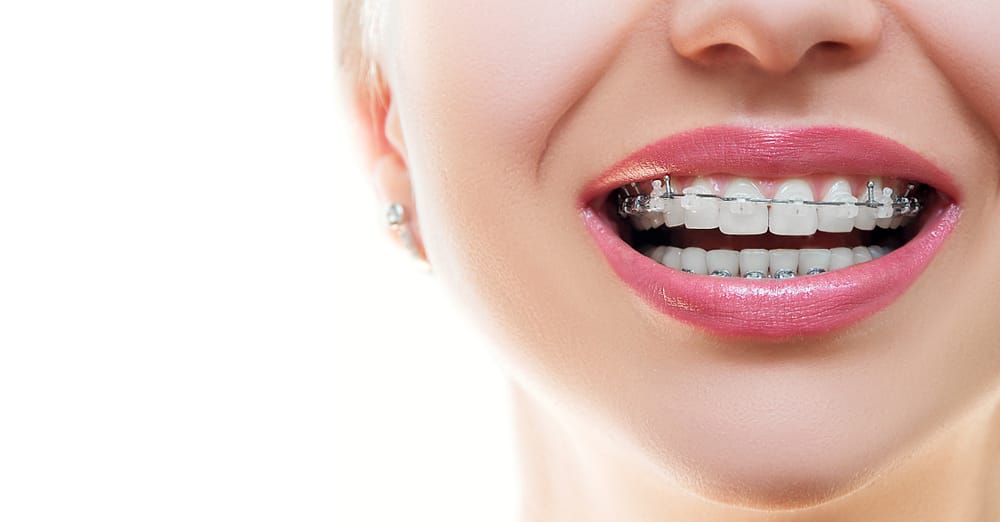What Are Dental Braces?
What's on this Page?
How do dental braces work?What is a dental retainer?How much do dental braces cost?What types of dental braces can I get?How long does treatment take?What are some common side effects of dental braces?Are there any risks associated with dental braces?What is the best way to care for my dental braces?How to use dental wax for bracesHow long do dental braces last?
20 March 2023 · Last updated on 20 March 2023
Dental braces gently apply pressure to the teeth and jawbone to reshape. These devices are worn to straighten teeth. They are often used in conjunction with other orthodontic appliances to help move teeth, jaw bones, and even change the shape of someone’s face. Braces are usually attached to the teeth with special adhesives and are tightened periodically to move teeth into the desired position, which can take several months to a few years. An orthodontist will be able to determine the best type of braces for your individual needs and can provide you with more information on what to expect during treatment.
How do dental braces work?
Dental braces gently apply pressure to the teeth and jawbone to reshape. Brackets that are attached to the teeth are connected by a wire and the wire is adjusted periodically to maintain the pressure and keep the teeth moving in the desired direction. The type of braces that you choose will affect how long treatment takes and how comfortable you are during treatment. Metal braces are the most common. Ceramic braces may be more expensive. Invisalign clear aligners are a popular alternative to traditional braces that use clear plastic trays instead of wires and brackets. Treatment with Invisalign generally takes longer than traditional braces but may be more comfortable for some people.
What is a dental retainer?
A dental retainer is a custom-made mouthpiece that may be worn after braces. Retainers are usually worn at night while you sleep but may also be worn during the day for a few hours at a time. Removable retainers are made of clear plastic and wire and can be taken out of the mouth for eating and cleaning. Fixed retainers are permanent until removed by a specialist. They are generally less visible than removable retainers but may be more difficult to clean. Your orthodontist will usually give you a retainer when your braces are removed. It is important to wear your retainer as directed to maintain your new smile.
How much do dental braces cost?
Your orthodontist will be able to give you a more accurate estimate of the cost of treatment after evaluating your individual needs. Many insurance plans cover some of the cost. Some orthodontists also offer financing options to help make treatment more affordable. With proper care, they can last for several years and help you achieve the straight, healthy teeth that you have always wanted. Basic metal braces may cost between $5,000 and $10,000.
What types of dental braces can I get?
The majority of braces are metal braces, which are the most prevalent variety and the most cost-effective. They're constructed of brackets that are connected to the teeth with a wire. To maintain the tension and keep the teeth moving in the proper direction the wire is periodically tightened. Ceramic braces may be more costly than metal braces, but they're generally considered to be more aesthetically attractive. A dental technician or dentist will be able to help you decide what's best for you.
How long does treatment take?
This depends on the severity of the misalignment and the type of braces that are used. In general, metal braces take the longest to correct dental problems, while clear aligners may be the quickest option. Treatment with metal braces may last between one to three years. Ceramic braces may take a bit longer, while Invisalign treatment may be around six months.
What are some common side effects of dental braces?
The most common side effect of dental braces is discomfort or soreness in the mouth. The soreness usually goes away after a few days, but you can take over-the-counter pain medication to help relieve the discomfort. Some problems are usually caused by poor oral hygiene, which may be fixed with fillings before the braces are installed.
Are there any risks associated with dental braces?
The most common complication is mouth soreness. In rare cases, the brackets and wires of braces can cause injuries.
What is the best way to care for my dental braces?
The best way to care for your braces is to brush and floss regularly. You should also avoid eating hard or sticky foods. It is important to see your orthodontist for regular check-ups to ensure that your braces are working properly.
How to use dental wax for braces
If you're experiencing discomfort from your braces, dental wax can help alleviate the pain. The wax will create a barrier between your braces and your skin, preventing the brackets and wires from rubbing against your mouth. The wax is made from safe, non-toxic materials and can be easily removed with a toothbrush.
How long do dental braces last?
In general, metal braces are worn for one to three years, while clear aligners may be worn for six months to two years. For more information on dental braces, take a look at HealthDirect.








